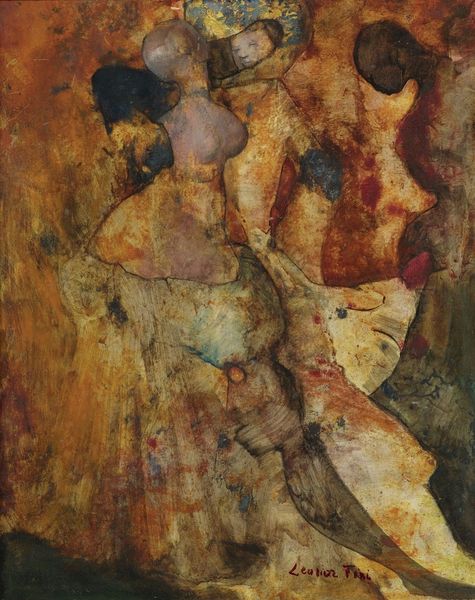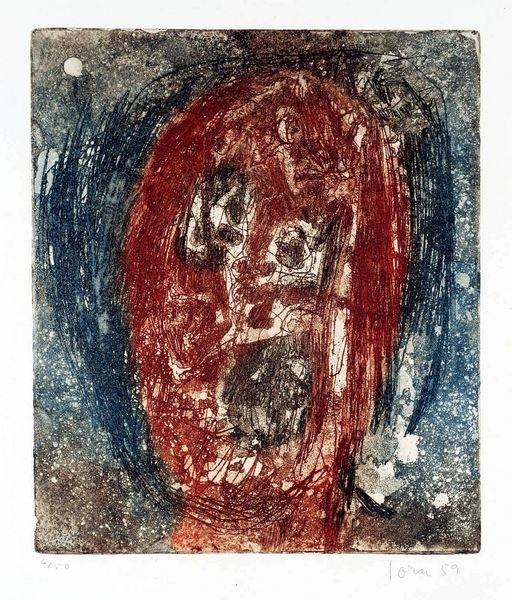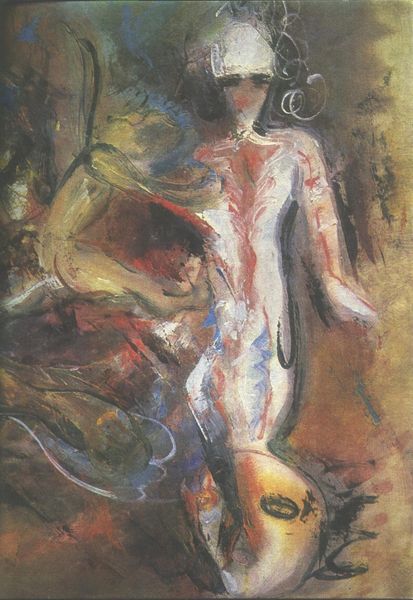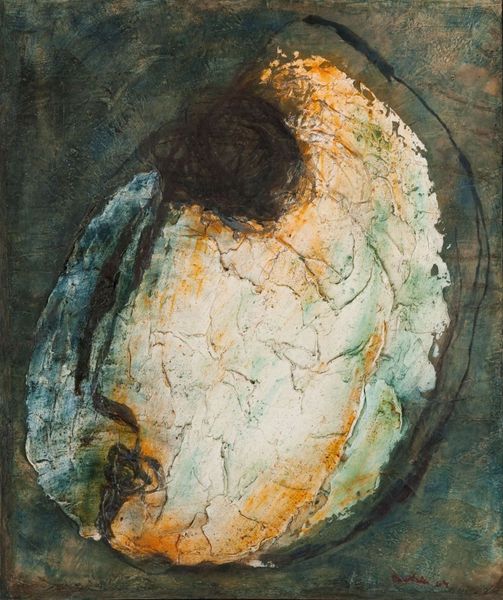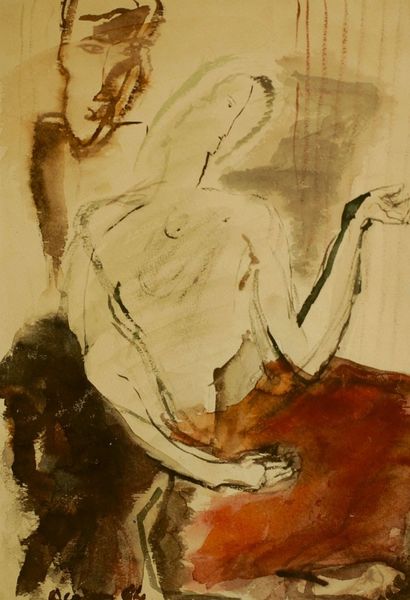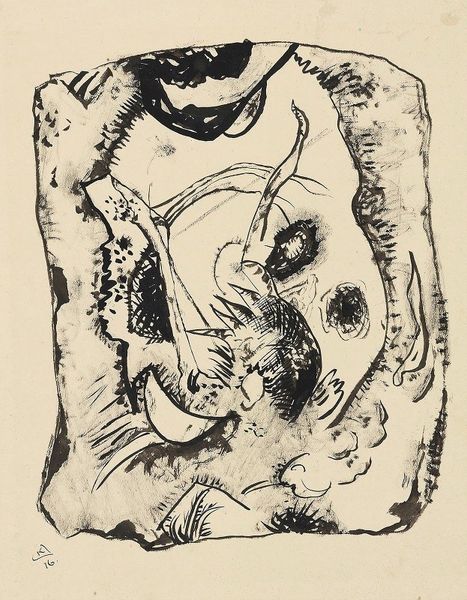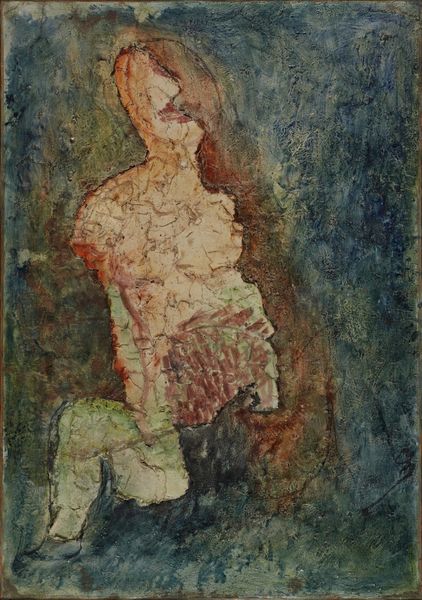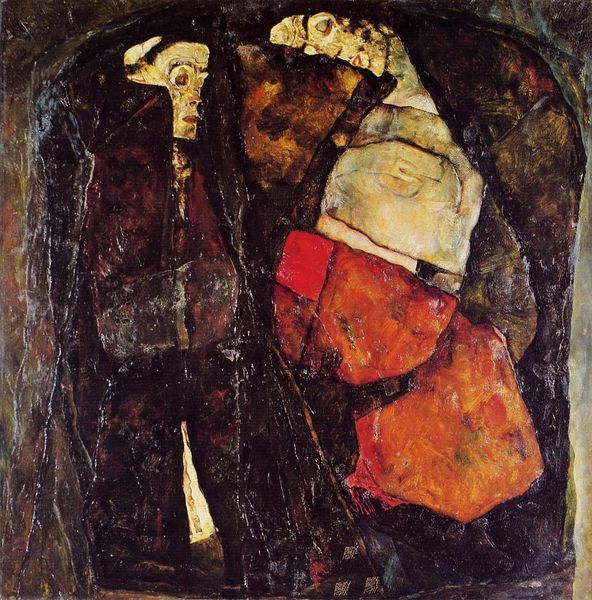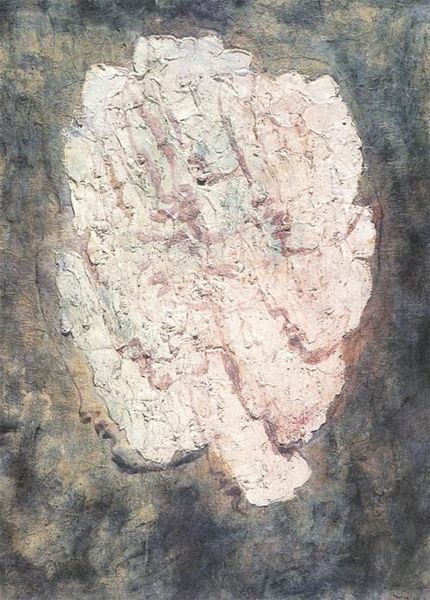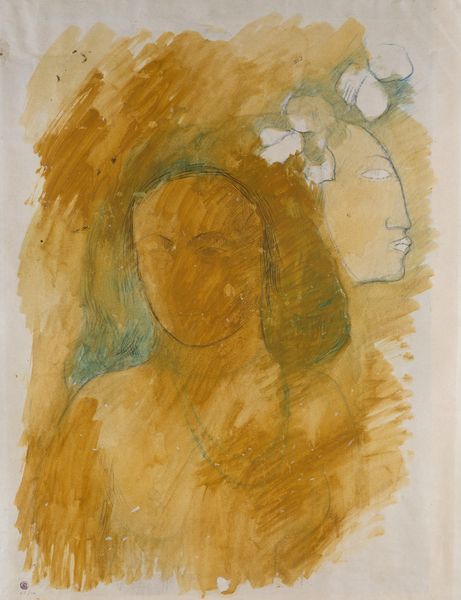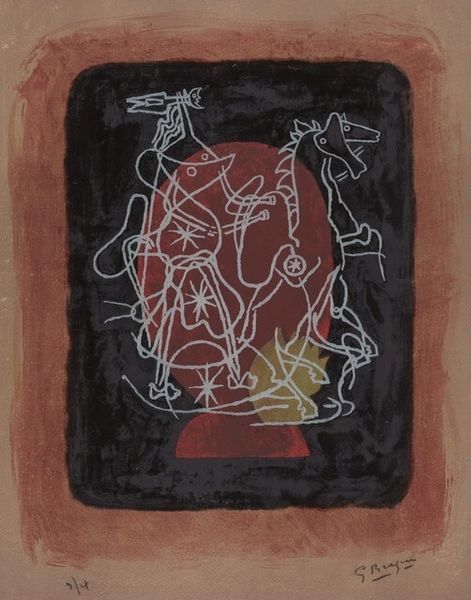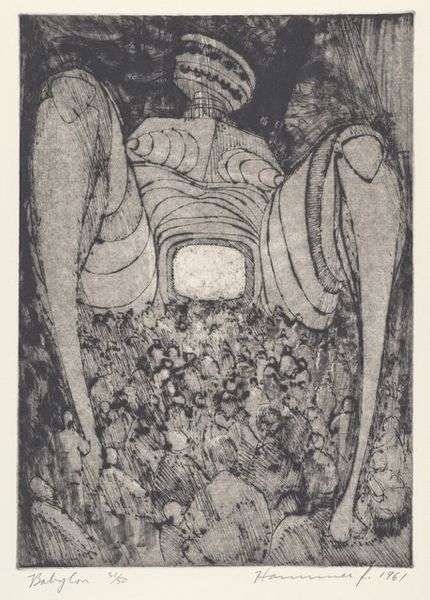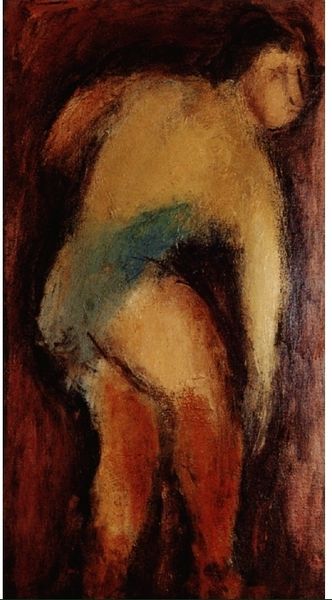
mixed-media, oil-paint, impasto
#
portrait
#
abstract-expressionism
#
abstract expressionism
#
mixed-media
#
oil-paint
#
oil painting
#
impasto
#
history-painting
Copyright: Jean Fautrier,Fair Use
Editor: This is Jean Fautrier's "Head of a Hostage No. 14," created in 1944 using mixed media and oil paint. The colors are muted, the texture is rough…it feels incredibly raw and conveys intense suffering. What kind of cultural echoes do you hear when you look at this? Curator: It screams of the unspeakable realities of World War II. This distorted face, rendered with thick impasto, is a potent symbol of trauma and dehumanization. What do you make of the color palette, the browns and reds? Editor: It’s like looking at dried blood and earth. It grounds the work in the physical reality of violence, and a feeling of being buried alive, perhaps? Does the impasto serve a similar function? Curator: Exactly! Fautrier uses the medium to embody the physical and psychological scars of war. Notice how the head is almost dissolving into the background? It suggests a loss of identity, a disintegration of self. What symbols of hope, reconciliation or peace might one expect, and note their *absence*. What impact does *that* have on you, the viewer? Editor: It really emphasizes the hopelessness. The absence of those symbols…it leaves you with nothing but the brutal reality. A really memorable lesson about how to represent trauma. Curator: Absolutely. Fautrier offers no easy answers or resolutions, but demands we confront the enduring legacy of violence. I think I see it differently now as well, having spoken with you. Thanks.
Comments
No comments
Be the first to comment and join the conversation on the ultimate creative platform.
